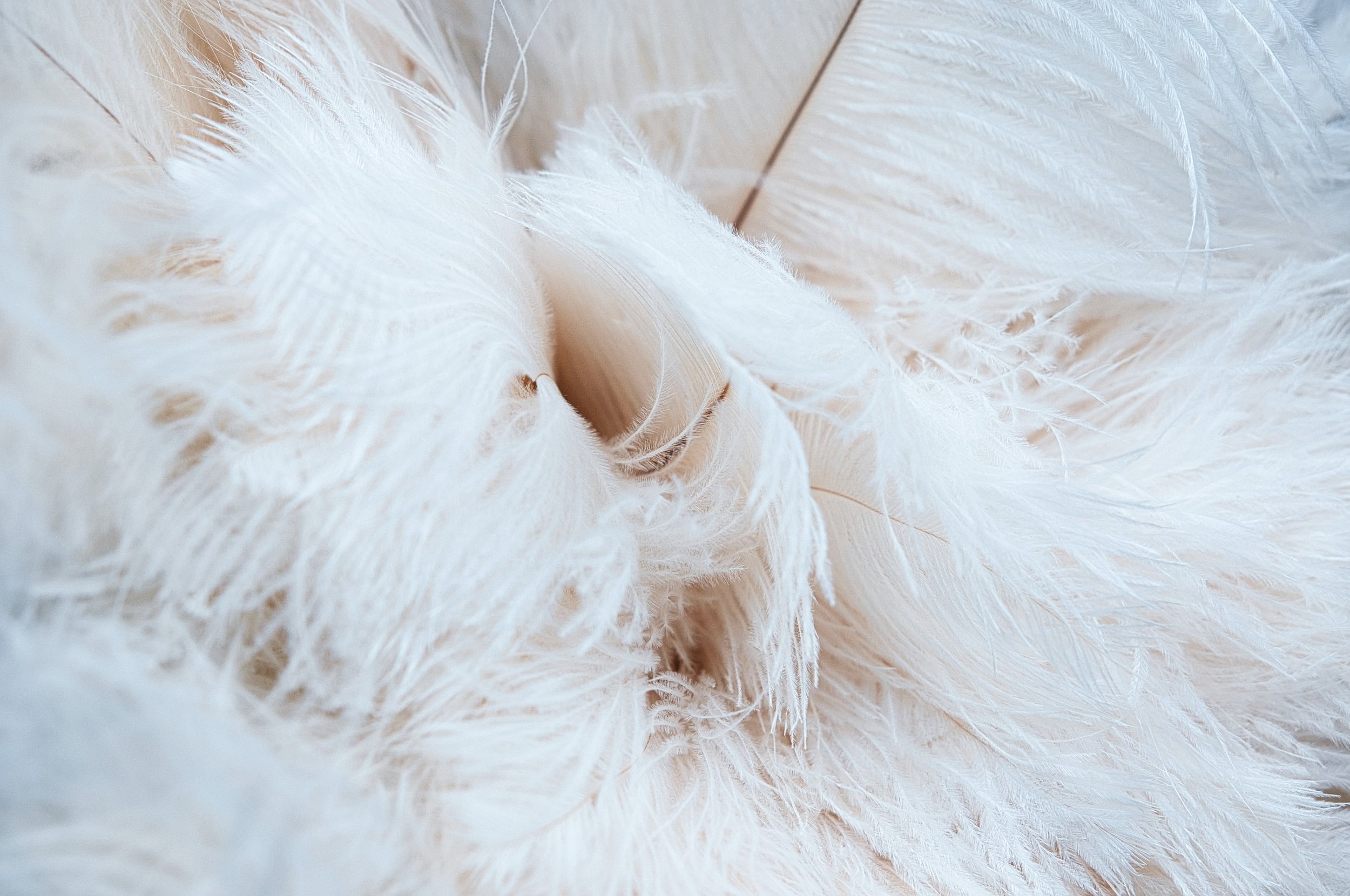Feathers are the new fur: cruelty in disguise
As the fashion industry has moved beyond the use of animal fur in droves, the use of decorative feathers has become more widespread. Both of these materials are derived through unsustainable exploitation, in supply chains killing animals for fashion.
We cannot allow feathers to become the new fur: we urge the fashion industry to move beyond all exploitation of wild animals for fashion, choosing plant-based, recycled, and other innovative solutions instead.
The use of decorative feathers opposes the fashion industry’s promised commitments to protecting animals and biodiversity
-

As brands ban wild animal skins, they are funding the same supply chains with their feather use
A growing list of fashion events, councils, brands and retailers are banning wild animal skins, including ostrich skins.
The vast majority of decorative feathers used by the industry come from ostriches exploited and killed in the same supply chains in which they are skinned.
Policies banning wild animal skins are rooted in the premise that it is not acceptable to kill these animals for fashion. Feather use is inconsistent with this premise. -

Citizen consumers oppose the exploitation of wildlife, and want to avoid the harm caused by decorative feather use
Across both Australian and United Kingdom markets, polling commissioned for our report shows us that people do not believe that the farming or killing of wild animals for fashion is acceptable.
When people learn that animals like ostriches and peacocks are exploited and slaughtered in feather supply chains, the vast majority of people prefer to avoid purchasing them.
-

Mislabelling of feathers is rife in the industry, eroding citizen consumer trust. A total ban on animal feathers can help to mitigate this problem
In our report with World Animal Protection, we have found that across a large number of major retailers, including ASOS, The Iconic, Harrods, SSENSE, Revolve, and more, garments labelled as made with ‘faux feathers’ in fact show clear visual evidence of genuine feather use, as confirmed by microscopy testing across products from numerous retailers.
Clear policies banning decorative feathers, and improved industry education to ensure proper implementation, are imperative.
-

The feather industry has historically caused species endangerment, and the trade of wildlife remains problematic and unacceptable
The Carolina parakeet and the Huia were driven to extinction for the feather trade, and other species, including the ostrich and the lyrebird came close.
Today, wild capture of birds continues, threatening their populations, harming biodiversity and increasing zoonotic disease risks.
The factory-farming of wild birds is not a solution to this problem, only resulting in transformed cruelty, health risks and environmental harm.(Peacocks transported in plastic bags for the feather trade. Getty Images)
-

The use of feathers is unsustainable, while next-generation solutions exist and can further evolve
While feathers are typically processed with toxic heavy metals like chromium and formaldehyde, and impact both climate and land during the feedlot and factory-farm production of them, solutions exist.
Non-animal alternatives have a reduced impact on biodiversity and help to protect wildlife. These can be made with the aid of 3D printing, plant-based materials, recycled and bio-based materials, as well as through fabric manipulation and embroidery.
(Image: 3D printed feathers by designer Iris van Herpen, photographed by Gio Stainao)
-

The move beyond feathers has already begun, and brands, retailers and fashion councils which engage sooner will be celebrated
Following our engagement, Melbourne Fashion Week has banned all wildlife exploitation-derived materials, including feathers, as of 2024.
The Iconic has also committed to banning all decorative feathers by 2024, following our engagement and identification of mislabelled feather, claimed to be faux.
ASOS has also banned decorative feathers, as has the luxury group SMCP. Policies protecting all wild animals and the planet we share will continue to be announced.
(A dress fringed with raffia rather than feathers, from Aje)

Want to keep learning?
Read our report on fashion’s use and exploitation of wildlife,
and how we can move beyond it.
Help us move the fashion industry beyond harming wildlife and the planet we share.
With your support, we can work to secure more policies protecting people, animals and the planet. Our research and reporting is only possible thanks to citizens like you, and every dollar makes a difference to our small but mighty team.


